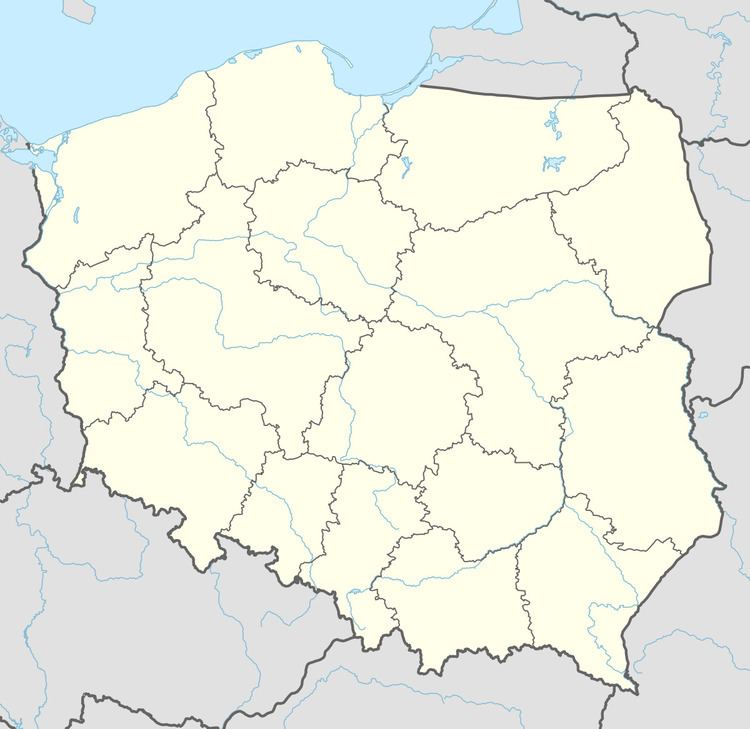Local time Monday 2:15 PM | ||
 | ||
Weather 15°C, Wind W at 14 km/h, 51% Humidity Voivodeship Kuyavian-Pomeranian Voivodeship | ||
Osieczek [ɔˈɕɛt͡ʂɛk] is a village in the administrative district of Gmina Książki, within Wąbrzeźno County, Kuyavian-Pomeranian Voivodeship, in north-central Poland. It lies approximately 7 kilometres (4 mi) south-east of Książki, 12 km (7 mi) east of Wąbrzeźno, and 44 km (27 mi) north-east of Toruń.
Contents
Map of Osieczek, Poland
History
The first information about Osieczek dates from 1222. However, the village existed much earlier, which is proved by the remains of the early medieval fortification. It was located on the shore of Jezioro Wielkie, about 750 m in a north-east direction from the present day centre of the village. The medieval fortification was surrounded by 4–5 m high embankment, which was made of earth and wood (you can see the remains even today), and by moat, due to which the fortification was completely cut off from the land. That fortification existed probably from the 10th to the end of the 13th century. It was used by country dwellers as a shelter in case of attack of Prussian tribes which happened very often. At the very beginning of Poland, Osieczek belonged to Chełmno Land (ziemia chełmińska) which was ruled by the first Piasts. The village became the property of the Order of the Teutonic Knights of St. Mary's Hospital in Jerusalem (for short the Teutonic Order) in 1226. As a result of the administrative changes, Osieczek became a part of the commandership Brodnica (komturstwo brodnickie). The village was owned by Jeśke von ritter Mosseken (Jan from Osieczek) at the time. In 1450 it was passed into Jakob von Mossegh’s hands and in 1499 into Johanes Osyeczkowski’s hands. Descendants of the latter sold the village to voivode Jan Działyński. He owned 2621 włóka of land, 118 buildings, 72 houses, 3 inns, a watermill, a brewery and a distillery. He was also maintaining a church and added a tower and a chapel with vault to it. The latter was designed for the family tomb of the founders. During Swedish wars the village was completely destroyed and depopulated. It faced also the outbreak of a cholera epidemic which decimated inhabitants. The remains of these horrible days are statues standing at the ends of the village where the sick were being buried. After the second Swedish war, Olędrzy were brought to the village. Towards the end of the 17th century, Działyński family gave Osieczek to Benedictine nuns from Grudziądz who moved into the village. Działyński family bought Osieczek from the order in 1770. The land was leased to Pokrzywnicki and Piwnicki. Osieczek became a member of the parish Nieżywięć and belonged to it until 1920. Prussian authorities built a school in 1840. It is a building of historic interest today. During the period of Partitions of Poland, inhabitants of Osieczek were opposing Prussian authorities very strongly. The proof of it may be a peasant who as the first in Poland moved to a cart in 1905 (before a famous Drzymała). After the Polish army took over Pomerania from Germans, the village came back to the motherland after 123 years.
Monuments
- the remains of the medieval fortification
- the parish church dedicated to Saint Katarzyna from 1222
- a cottage owned by J. Lewandowski, the 19th century
- a cottage owned by A. Janke, the 19th century
